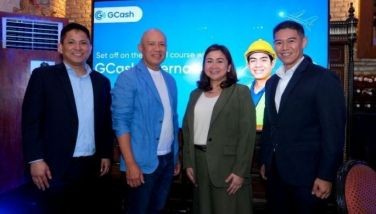The Asean Economic Community arrives by 2015: Do you know how strong your brand is?
MANILA, Philippines - 2015 is the target year of the ASEAN Economic Community, which opens the doors to the creation of a single market and production base that comprises of Singapore, Myanmar, Laos, Thailand, Philippines, Brunei, Indonesia, Vietnam, Cambodia, and Malaysia. If taken as a single entity, the 10 member countries would already be the 12th largest economy in the world, (after Europe, USA, China, Japan, Germany, Commonwealth of Independent States, France, UK, Brazil, Russia and Italy), and with this economic integration, the AEC hopes to transform this region into a highly competitive and equitable economic region that is fully integrated into the global economy.
With less than six months to go before the scheduled start, local businesses are already beginning to seriously consider the opportunities and challenges that this will bring.
While the AEC allows for free flow of goods, services, investment, capital, and skilled labor within the region, there are still difficulties to be worked through, like readiness of infrastructure, mobility of labor and services, and even transparency of public sector procurement in each country.
Basically, while we all know it’s more beneficial to play in one playpen, we still need to understand how to make nice with each other.
However, while many businesses are outwardly focused in tackling the AEC, they forget to look at one of their most important assets: their own brand. After all, aside from economies of scale and reduced intra-ASEAN barriers, one of the most exciting things about the AEC is the potential for increasing your brand’s reach. It’s one thing to promote and propagate your brand to 100 million people with the same heritage, culture, and quirks as you. But the AEC throws your brand into a whole new ball game where the players are different. Some of them come from highly industrialized cities and write in UK English; others come from places with absolutely no English signs anywhere.
In an exclusive breakfast seminar for select top executives from Manila, Peter Mack, the executive director for Marketing for Landor Associates in Asia-Pacific, disclosed the importance of having a strong brand, more especially during the AEC.
Landor Associates is one of the biggest and most recognized branding and design firms in the world, with 26 offices in 20 countries. Founded in 1941, they’ve worked with Procter & Gamble, LG, Visa, Levi’s, Cathay Pacific Airlines, Citibank, and Singapore Airlines. It’s no accident that these are some of the strongest brands in the world. Their founder, Walter Landor, pioneered many of the research, design, and consulting methods that are now standard in the branding industry, and today they are experts in everything branding, from strategy to engagement. (Locally, they’ve worked with Philippine Airlines and San Miguel Beer.)
The brand is a culture
So what is a brand, anyway? This question has probably been around since branding was branded as “branding,” but even today it still garners varied answers, even from marketers themselves.
Peter answers it simply: it’s culture. Put even more simply, it’s everything. Landor defines it as “the sum of all interactions, perceptions and communications which a company, service or product has with its target audiences,” which includes more than just consumers, but employees and investors as well. The brand is more than just your product or service, but it’s also the look of your meeting rooms, the kind of people you hire, and even the way your employees say hello. Before you even start talking about how to expand your reach, you have to know exactly what you’re working with.
The brand is your asset
“A lot of companies have a chief financial officer, but not a chief marketing officer,” Peter pointed out, proving how many companies prioritize other aspects of the business in making strategic decisions and not realizing that it the brand is not just a fluffy idea, but a strategic asset.
“As a corporate asset, the brand should be part of long-term corporate decision making.”
Aside from the obvious benefits — revenue and profit — companies stand to benefit so much from having a strong brand, like more focused and productive employees, more predictability in public reactions, and even reduced management time on issues.
“Strong brands are good business,” said Peter, and encouraged brands to imbibe the characteristics of a strong brand: different, relevant, disciplined, and measured.
The aec and your brand
Before the AEC catapults your brand into its new (and much larger) arena, now is the time to give you and your brand an honest review.
“There are few worse occasions than this for blindness of pride,” warned Peter. “Understand and internalize the strategic asset that culture and brand have the potential to be.” Once you do, you can strategize how you want to position yourself in the market.
Looking at market dynamics (whether it’s within ASEAN or even ASEAN-to-global), there are generally two ways to go about it: supersize (where you “supersize” your attributes across markets and segments to dominate as the category leader) or arbritage (aggressively promoting your strong cultural, culinary or aesthetic personality to stand out, drive awareness and loyalty).
Technical or operational companies (like banking, pharmaceuticals, accountancy, etc.) may find that supersizing is better for them, where their operational or functional aspects are the reasons to believe. More specialized businesses in lifestyle or more “emotional” categories would prefer arbritage, especially when they have a smaller but passionate audience who finds themselves emotionally or culturally connected to their products.
The Filipino brand may not be the best brand (yet)
Many brands may be tempted to brandish the fact that they’re a Filipino company, but Peter tells them to be careful. It will also depend on what kind of business or brand you have.
Most southeast Asian countries are positively associated with “softer” categories, instead of the more rational ones like gadgetry.
“It’s not a permanent situation,” he added, sharing that just a few decades ago, countries such as Japan and Korea were not known for their expertise in technology. It took a few brands — strong ones — to stand out and change perceptions.
And that’s another reason why the AEC is such a milestone for companies and their brands.
“Brands, in their true meaning of representing the culture and reputation of company/product/service, are the purest metrics of success in such markets,” said Peter.
“This milestone is an appropriate juncture to check the health of your brand.”
- Latest





























